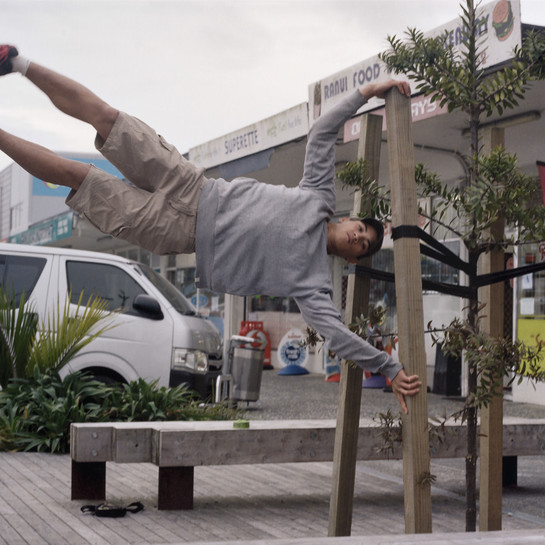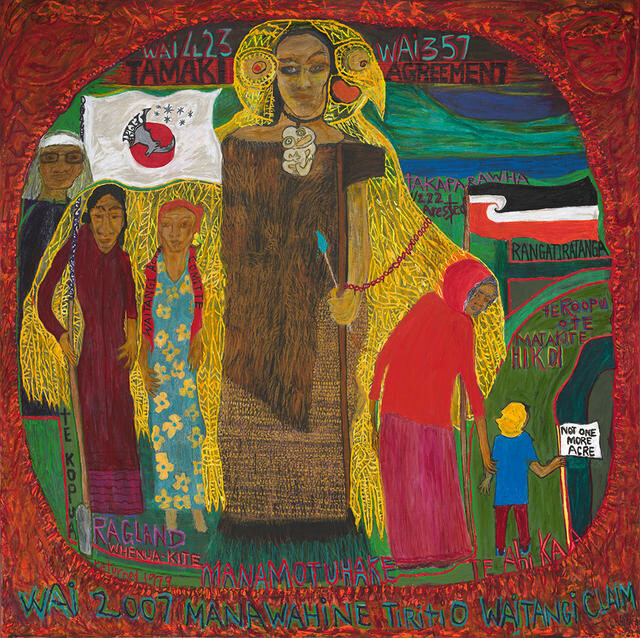Emily Karaka
Aotearoa New Zealand, b.1952
Waikato,
Ngāpuhi,
Ngāi Tai ki Tāmaki,
Te Kawerau ā Maki,
Ngāti Tamaoho,
Te Ākitai Waiohua,
Te Ahi Waru,
Ngāti Mahuta,
Ngāti Tahinga,
Ngāti Hine,
Māori
DNA
- 2022
- Acrylic, oil, oil pastel on canvas
- Purchased 2022
- 1830 x 1830mm
- 2022/102
Tags: birds (animals), flags, frames (ornament areas), hei tiki, Māori (culture or style), people (agents), protesting, stars (motifs), words
Emily Karaka is known for her fearless engagement with political issues, especially in relation to Te Tiriti o Waitangi (The Treaty of Waitangi). This painting depicts wāhine Māori activists who have led protest movements in Aotearoa – Te Puea Hērangi, Tuaiwa (Eva) Rickard, Titewhai Harawira and Whina Cooper – and includes the flag of Te Arikinui, Dame Te Atairangikaahu – the Māori Queen. At the centre is a self-portrait based on a photograph of the artist at Ihumātao, a site in Tamaki Makaurau Auckland with deep archaeological and cultural significance for Māori, which was confiscated by the New Zealand government in 1863 in a breach of the Treaty. “I am wearing the kahu kiwi of my tupuna, Kiwi Tamaki, and his whale bone taonga named Waiohua,” Emily has written. “The golden yellow ruru, encompassing and connecting the wāhine like a spiritual korowai, represents kaitiakitanga [guardianship/protection]. All the wāhine in the painting share the same DNA—whakapapa and ancestry.”
(Perilous: Unheard Stories from the Collection, 6 August 2022- 21 July 2024)

